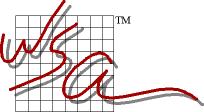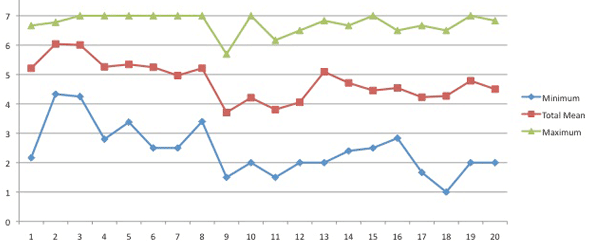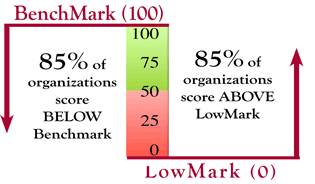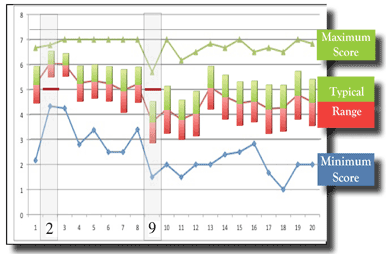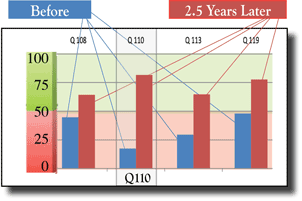ODS - The Organizational MRI |
||
ODS Articles
|
Creating Meaningful MeasuresWSA Canada Solved the Problem of Confusing Scores
The above chart shows how confusion is created.When the range of response for different companies varies with the question, it is hard to make a meaningful conclusion
The above chart shows the variation of scores for different questions:
This article identifies how the ODS data is reported so companies can make meaningful comparisons ofx their own performance to other companies. |
|
Hard Meaningful Measures |
||
Details |
||
